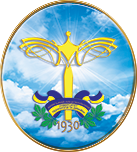Будь ласка, використовуйте цей ідентифікатор, щоб цитувати або посилатися на цей матеріал:
https://er.knutd.edu.ua/handle/123456789/30092Повний запис метаданих
| Поле DC | Значення | Мова |
|---|---|---|
| dc.contributor.author | Gryshchenko, Ivan | - |
| dc.contributor.author | Jin, Liqiang | - |
| dc.contributor.author | Biriukova, Yulia | - |
| dc.contributor.author | Derkach, Tetiana | - |
| dc.date.accessioned | 2025-07-01T11:13:55Z | - |
| dc.date.available | 2025-07-01T11:13:55Z | - |
| dc.date.issued | 2025 | - |
| dc.identifier.citation | Teaching Analytical and Inorganic Chemistry in English As a Foreign Language / I. Gryshchenko, L. Jin., Y. Biriukova, T. Derkach // Orbital: The Electronic Journal of Chemistry. - 2025. - № 17 (1). - P. 145-156. | uk |
| dc.identifier.issn | 1984-6428 | uk |
| dc.identifier.uri | https://er.knutd.edu.ua/handle/123456789/30092 | - |
| dc.description.abstract | The article aims to summarise the English teaching experience of the lecturers of the Kyiv National University of Technology and Design in inorganic and analytical chemistry during 2019-2023 for Chinese first-year undergraduate students of the Kyiv College of the Qilu University of Technology (China). About 800 students of different years enrolled in two specialities-biotechnology and chemical technology and engineering-took part in the experiment. Changes in learning were analysed in the context of gradual changes in English language proficiency over the years of intake and changes in the learning environment associated with the COVID-19 pandemic. The preferred learning styles of student groups using the Felder-Soloman method were studied as a function of the years of intake and compared to the profiles of Ukrainian students of similar specialities. Ukrainian students are always characterised by the dominance of one learning profile (90% of respondents), while several profiles are characteristic of Chinese students. At the beginning of the experiment, the programs and teaching methods for 2019/20 were based on multimedia lecture courses at Kyiv University, i.e. they were developed for teaching mono-profile groups. Given several educational preferences among Chinese students, the learning environment affected by COVID-19, and the increased cognitive load when using a foreign language, the original teaching materials became nonoptimal and needed changes. The work results showed that a prospective way for such changes is considering the recommendations of the cognitive load theory and providing better conditions for forming conceptual structures of chemical knowledge. Over the years of intake, with unchanged educational programs, presentation materials have been modernised following the identified problems and preferred students' learning profiles. © 2025, Universidade Federal de Mato Grosso do Sul, Departamento de Quimica. All rights reserved. | uk |
| dc.language.iso | en | uk |
| dc.subject | cognitive load | uk |
| dc.subject | Conceptual structure of chemical | uk |
| dc.subject | extraneous and germane | uk |
| dc.subject | Internal | uk |
| dc.subject | knowledge | uk |
| dc.subject | Learning style | uk |
| dc.subject | Symbolic levels | uk |
| dc.title | Teaching Analytical and Inorganic Chemistry in English As a Foreign Language | uk |
| dc.title.alternative | Викладання аналітичної та неорганічної хімії англійською мовою як іноземною | uk |
| dc.type | Article | uk |
| local.contributor.altauthor | Грищенко, Іван Михайлович | - |
| local.contributor.altauthor | Бірюкова, Юлія Андріївна | - |
| local.contributor.altauthor | Цзінь, Ліцян | - |
| local.contributor.altauthor | Деркач, Тетяна Михайлівна | - |
| local.subject.section | Проблеми вищої освіти | uk |
| local.source | Orbital: The Electronic Journal of Chemistry | uk |
| local.subject.faculty | Факультет хімічних та біофармацевтичних технологій | uk |
| local.identifier.source | Видання, які входять до міжнародних наукометричних БД Scopus та Web of Science | uk |
| local.subject.department | Кафедра промислової фармації | uk |
| local.identifier.doi | https://doi.org/10.17807/orbital.v17i1.22424 | uk |
| local.identifier.uri | https://www.scopus.com/pages/publications/105006586439 | uk |
| local.subject.method | 1 | uk |
| Розташовується у зібраннях: | Наукові публікації (статті) | |
Файли цього матеріалу:
| Файл | Опис | Розмір | Формат | |
|---|---|---|---|---|
| 22424-Article Text-96641-1-10-20250511.pdf | основна стаття | 593,19 kB | Adobe PDF | Переглянути/Відкрити |
Усі матеріали в архіві електронних ресурсів захищені авторським правом, всі права збережені.
